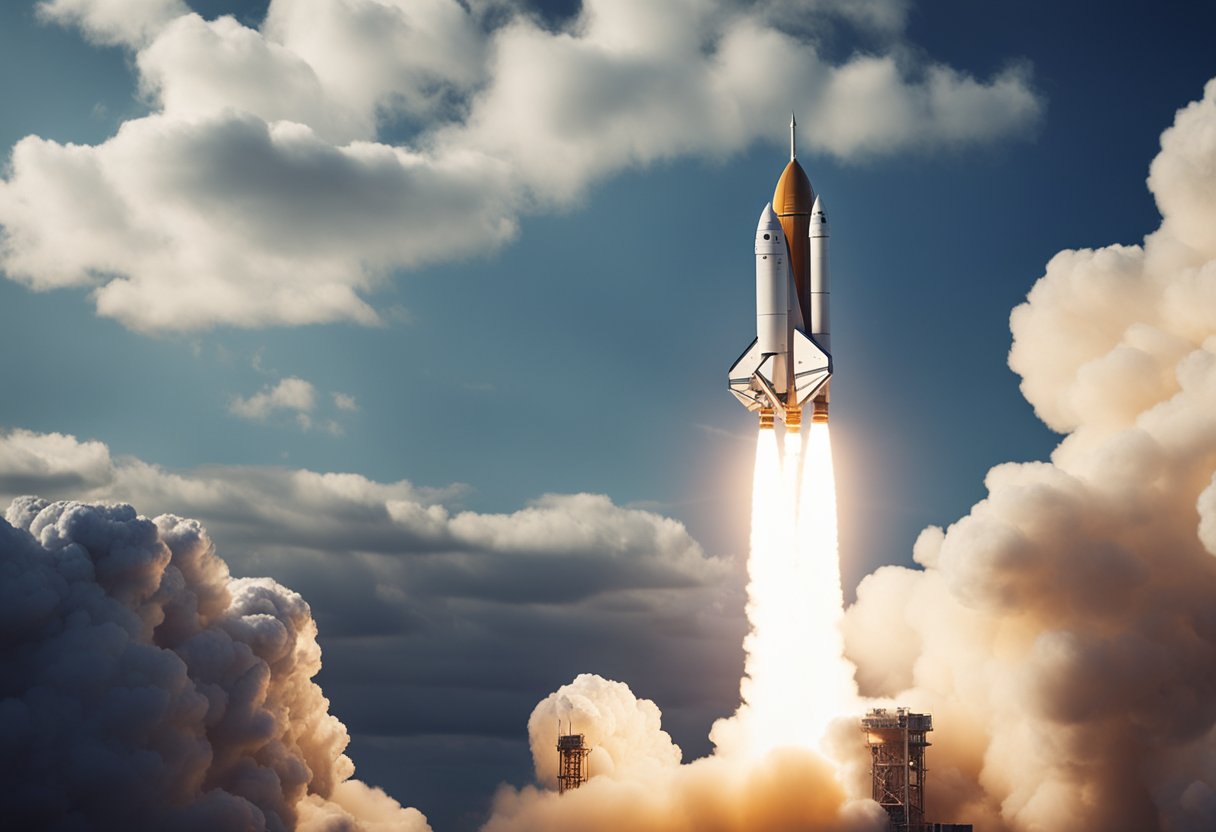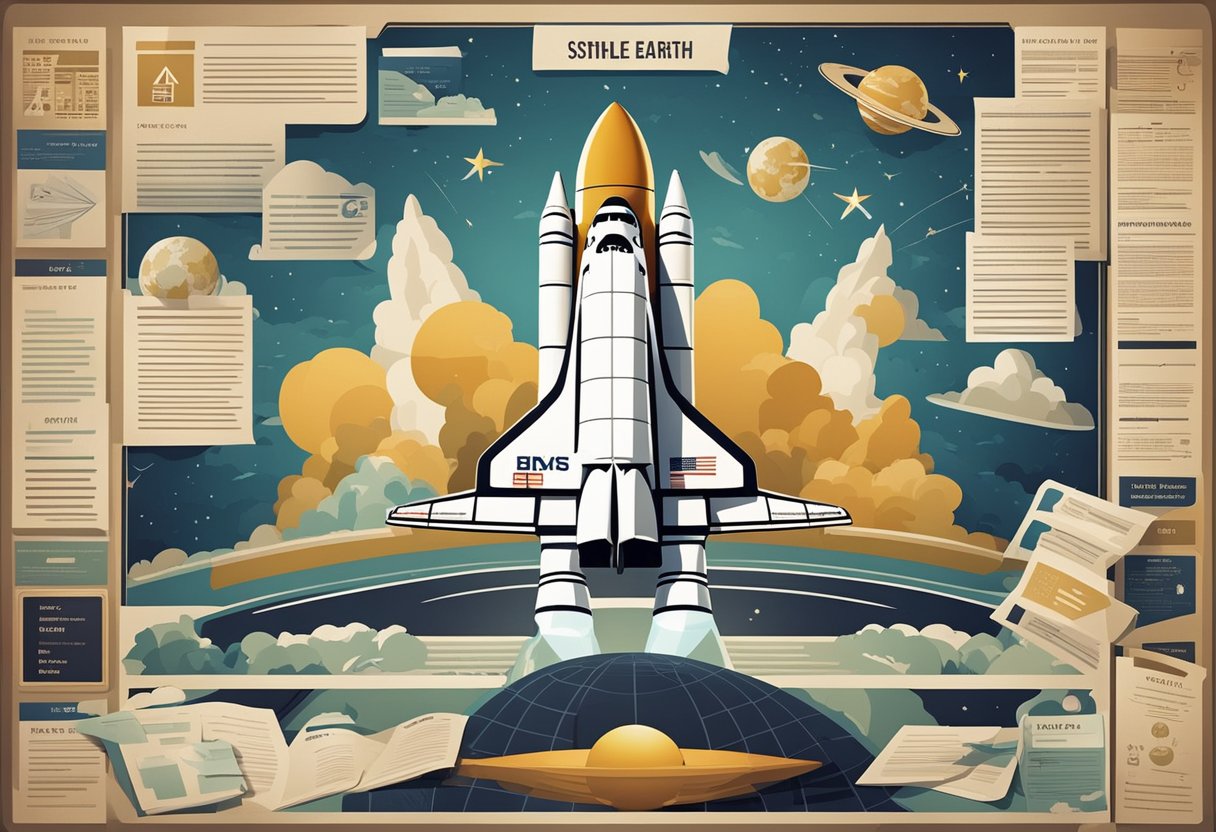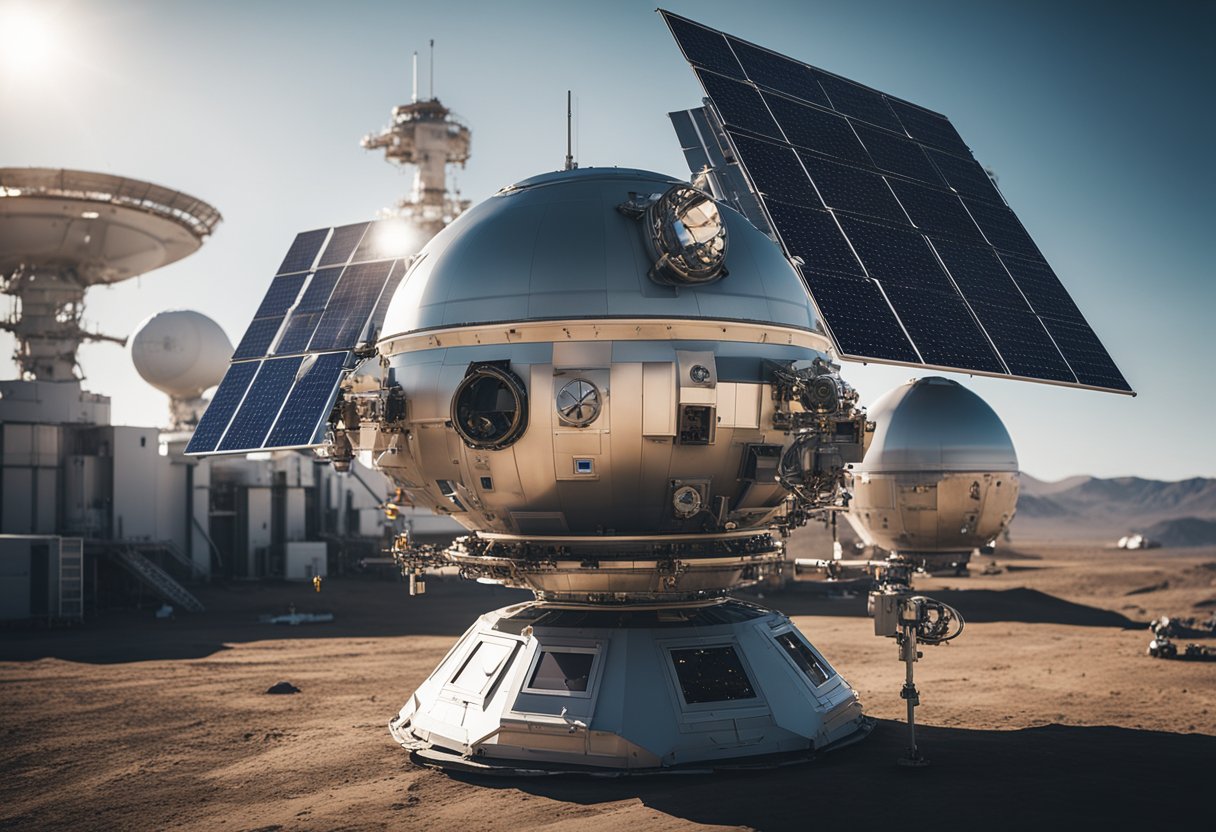
Space Tourism Legal Requirements: As we look to the stars, space tourism emerges as a thrilling new frontier for exploration and leisure. However, venturing into the cosmos is not as simple as booking a flight to your favourite holiday destination. The legal landscape of space tourism is complex, involving stringent regulations that address the safety, coordination, and rights of all involved. From the Federal Aviation Administration’s oversight of commercial spaceflight in the United States to international agreements that govern the use of outer space, every aspect requires careful attention.

The companies pioneering this industry must navigate a maze of licensing and certification requirements, ensuring their vehicles meet rigorous safety standards to carry passengers beyond Earth. In parallel, considerations around the space tourist’s legal status and rights become focal points, needing clarification and consensus on a global scale. As this sector of adventure matures, it must also reckon with environmental and sustainability issues, affirming space tourism’s duty to the preservation of our planet and beyond.
Space tourism transcends traditional boundaries, demanding an unprecedented level of international law coordination and sustainable development. Our understanding and innovations within space tourism transportation and infrastructure need to advance to ensure the practicality and longevity of commercial space travel. Standing at the precipice of this bold era, we must balance our excitement with responsibility, ensuring that today’s galactic endeavours lay a secure foundation for tomorrow’s interstellar aspirations.

Space tourism marks a significant milestone in the evolution of space exploration, shifting the cosmos from a realm reserved for astronauts to a destination for civilian adventurers. We focus on its progressive development and the pivotal companies propelling tourists beyond Earth’s atmosphere.
Space tourism has transitioned from a mere concept to reality since the early 2000s. Dennis Tito became the first fee-paying space tourist, travelling to the International Space Station (ISS) in April 2001. His landmark voyage, brokered by the company Space Adventures, paved the way for several other private individuals to experience space. As interest grew, companies such as Virgin Galactic, Blue Origin, and SpaceX have emerged, each with distinct visions for expanding human presence in space. Virgin Galactic aims to offer suborbital flights, providing passengers with a few minutes of weightlessness and an unparalleled view of Earth.
The market of space tourism has been shaped by influential companies and personalities, each contributing to its expansion. Virgin Galactic, founded by Richard Branson, emerged as a trailblazer with its VSS Unity spacecraft designed for commercial service. Meanwhile, Blue Origin, led by Jeff Bezos, offers suborbital experiences aboard its New Shepard vehicle. Recently, SpaceX, headed by Elon Musk, has elevated the ambition by transporting crews to orbit and proposing to take civilians further into space, with the moon and Mars in its sights. These enterprises are supported by websites like SpaceVoyageVentures.com, documenting the potential for future tourism trips and the options available for aspiring space tourists today.
As we explore the cosmos through space tourism, a robust legal framework is paramount to ensure safety, transparency, and international cooperation. Below, we detail the specifics of international and domestic regulations that shape the nascent industry of space tourism.
International space law provides a foundational structure for all activities beyond Earth’s atmosphere. The cornerstone is the Outer Space Treaty, ratified in 1967, which outlines that the exploration of outer space shall be done for the benefit of all countries and space shall be free for exploration by all. The treaty emphasises that outer space is not subject to national appropriation. Subsequent agreements, such as the Liability Convention, the Registration Convention, and the Moon Agreement, augment this treaty, setting standards for liability, registration, and activity on the Moon and other celestial bodies.
In the realm of domestic law, each country has its own regulations that align with international law. In the United States, for example, the Federal Aviation Administration (FAA) is the body responsible for the regulation of commercial spaceflight. It ensures that companies adhere to federal regulations for safety and obtain the necessary licenses. These regulations are imperative, as space tourism transcends traditional airspace and enters the realm of airspace governed by air law.
The implications of the Outer Space Treaty are far-reaching, particularly when it comes to space tourism. It influences how we design our space tourism ventures by ensuring that activities are conducted with consideration to the safety and interests of all nations. It also lays the framework for future legislation that may define space tourism more explicitly. As space tourism involves navigating areas beyond any national jurisdiction, the principles of the treaty guide the creation of legal norms that are universally accepted.
The intersection of international law and laws of outer space continues to evolve with the advancement of space tourism. It remains crucial that we adhere to the treaty’s stipulations on peaceful use, respect for celestial bodies, and liability for damages, setting a precedent for responsible exploration.
In establishing the framework for space tourism, we must consider the pivotal roles of licensing and certification. Such regulatory measures ensure the safety and legality of commercial spaceflight operations.

The Federal Aviation Administration (FAA) plays a crucial role in the certification of spaceflight in the United States. As an aspiring space tourism company, we must adhere to the FAA’s rigorous safety standards before obtaining certification. The FAA’s oversight is essential for ensuring the protection of both passengers and crew during commercial spaceflight operations.
Obtaining a commercial spaceflight license is a mandatory step for any entity aiming to conduct space tourism activities. This ensures that we, as the licensee, meet specified criteria, including safety, training, and environmental regulations. The process encompasses detailed assessments of our vehicle designs, operation plans, and the qualifications of our personnel. Our commitment to securing such licensing is a testament to our dedication to upholding the highest levels of safety and regulatory compliance.
As we navigate this burgeoning industry, we are continually monitoring regulatory developments and striving to fulfil our obligations. Our engagement with regulators and adherence to licensing requirements are fundamental to fostering a sustainable and responsible space tourism sector.
The burgeoning industry of space tourism necessitates rigorous safety standards and robust space traffic management to ensure the well-being of passengers and the sustainability of space travel.
Safety is paramount when it comes to sending tourists into space. We undertake thorough risk assessments to ensure that every aspect of the journey, from take-off to landing, adheres to stringent safety standards. Passenger safety is at the forefront of these assessments, with companies such as Virgin Galactic’s SpaceShipTwo being subject to constant scrutiny to certify its readiness for commercial operation. The intricacies of these evaluations cover potential space debris collisions and the mitigation of environmental impacts.
As space becomes a busier domain, traffic management is crucial to avoid collisions and ensure safe pathways for spacecraft. NASA plays a significant role in orchestrating this traffic, striving to create an environment where both commercial and governmental activities can coexist safely. Our approach to space traffic management also involves the development of guidelines and best practices, aligning with international standards to facilitate seamless coordination across borders.

As we explore the nascent industry of space tourism, it becomes crucial for us to understand the legal implications for those venturing beyond Earth’s atmosphere. Specifically, the status and rights of space tourists under current regulations present unique challenges, balancing the novelty of the venture with established legal frameworks for space activity.
Contrary to the traditional astronaut designation, space tourists are not recognised as professional astronauts by international treaty, even though they travel to space. This distinct legal status affects their rights and responsibilities in space. For instance, while professional astronauts are regarded as “envoys of mankind” according to the Outer Space Treaty of 1967, space tourists do not inherently carry this diplomatic status, which raises queries about their protection and involvement under international law.
Informed consent plays a pivotal role in space tourism. Potential space tourists must be cognisant of the risks involved and voluntarily agree to them. Space tourism companies are obliged to transparently disclose the dangers, in writing, securing the tourists’ acknowledgment before proceeding.
For insurance, space tourists and their next of kin must be aware that current legal frameworks may not always provide adequate protection against all possible contingencies. While insurance can mitigate financial risks for tourists in the case of accidents or health issues, delineating the scope of coverage is complex. Tourists might require specialised insurance policies, given the elevated risks of space travel compared to standard aviation.
Our collective endeavour at SpaceVoyageVentures.com offers a compendium of information addressing these imminent trips, ensuring space enthusiasts are well-informed about the legal intricacies of their out-of-world adventures.

In the burgeoning field of space tourism, liability and risk management are paramount concerns. As we usher in an era of commercial space travel, the complexity of legal frameworks and safety measures is ever-growing.
In the United States, the Federal Aviation Administration (FAA) is a pivotal entity overseeing commercial spaceflight. Space tourism companies must navigate the FAA’s strictures to procure the necessary licences and permits, ensuring their vehicles conform to rigorous safety protocols to carry passengers. Importantly, the liability for space tourists is a complex issue, encompassing potential harm to the passengers themselves and any affected third parties.
Mitigating risks for third parties involves a comprehensive strategy including insurance and thorough risk management policies. Companies in the space tourism industry must collaborate with regulators and policymakers to craft a legal framework that is both clear and practical, which is essential to protect not just the astronauts but also those on the ground. Establishing liability in the event of an incident is crucial, hence, space tourism entities must have robust systems in place to manage these potential liability issues efficiently.
Our work at SpaceVoyageVentures.com continually assesses and documents the latest developments in space tourism, including the risks and regulatory requirements needed to ensure a safe journey beyond our planet.

As the space tourism industry develops, financial and economic considerations take centre stage, notably the costs for participants and the wider economic impact on the commercial space industry.
Space tourism is a costly endeavour. At present, the price of a ticket for a suborbital flight can reach hundreds of thousands of pounds, while an orbital experience might cost several million. These figures reflect not only the experience but also the extensive safety measures and advanced technology required to travel beyond Earth’s atmosphere. Prospective space tourists often must deposit a significant sum to secure a booking. For detailed documentation of current and forthcoming space tourism opportunities and pricing, one can visit SpaceVoyageVentures.com, providing keen insights into the economic requirements of joining such elite expeditions.
The expansion of the space tourism sector has considerable implications for the global economy. The creation of new jobs is an immediate consequence, covering fields from engineering and aeronautics to hospitality and insurance. Furthermore, it stimulates technological advancements that can cascade into other industries. To ensure financial viability, companies involved in space tourism must negotiate complex insurance packages to mitigate the inherent risks of space travel, including potential equipment failures or accidents. The economic ripples extend into the tourism, manufacturing, and service sectors, collectively bolstering the commercial space industry and attracting significant investment to fuel this growth.

As the prospect of space tourism shifts from science fiction to reality, we must address the pressing environmental and sustainability issues that accompany such advancements. These concerns specifically pertain to the impact these activities may have on Earth’s climate and the ongoing need for sustainable practices in the exploitation of space.
Spaceflights are not without their environmental footprint. The rocket launches needed for space tourism emit gases and particles high into the atmosphere where their impact is not yet fully understood. Considering the potential for increased launches, climate change becomes a pertinent issue. The emissions can affect the ozone layer and may alter upper-level atmospheric conditions, which subsequently could influence climate patterns.
In a paper titled “PDF Legal Challenges in Regulating Space Tourism”, the emphasis is placed on how space tourism should be developed in a manner that minimises its impact and contributes to sustainability. This requires diligent research and environmental monitoring to mitigate unwanted effects.
Sustainable exploitation of space necessitates careful management of space debris as well as a thorough understanding of the microgravity environment and its effects. Space tourism ventures, such as those chronicled on SpaceVoyageVentures.com, must strive to prevent the accumulation of debris in Earth orbit, a growing concern given the potential for these materials to cause collisions and generate more debris.
Furthermore, sustainability in the context of space tourism involves not just protecting the outer space environment but also ensuring the longevity and safety of space activities. Regulatory frameworks like those managed by the Federal Aviation Administration (FAA) in the United States, which stipulate that companies obtain proper licenses and ensure their vehicles meet safety standards, are a step towards assured responsibility in space tourism.
By considering both the environmental impact and the overarching need for sustainability, we are poised to make informed decisions that will shape the responsible development of space tourism for generations to come.

In developing the framework for space tourism, we must consider the distinct types of launch systems and grasp the differing dynamics of orbital and suborbital flights. These elements are critical to the construction of a reliable and efficient infrastructure for space tourism.
For space launches, companies opt for either vertical or horizontal systems. Vertical launch systems involve rockets taking off vertically from the ground, directly ascending through the atmosphere. This traditional and well-established method has successfully been used in both governmental and private space missions. On the other hand, horizontal launch systems employ aircraft that take off from a runway and release a space-bound vehicle at a high altitude, making them potentially more reusable and economical.
Vertical Launch:
Horizontal Launch:
Orbital and suborbital flights have distinct mechanics and serve different niches within space tourism. Orbital flights achieve enough velocity to enter Earth’s orbit, presenting opportunities for extended stays and wider exploration, the realm of orbital space tourism. This entails a higher level of complexity, energy requirements, and safety considerations.
Suborbital flights briefly exit the Earth’s atmosphere, allowing space tourists to experience weightlessness and an overview of Earth from space. Suborbital space tourism, represented by vehicles requiring less power than those designed for orbital flight, provides a shorter experience that is more accessible to the general public.
Orbital Flight:
Suborbital Flight:
For us at SpaceVoyageVentures.com, preparing for the next leap in transportation and infrastructure involves meticulously planning for both launch methods and understanding the intricate flight mechanics required to offer safe, reliable, and unforgettable space tourism experiences.

As the era of space tourism unfolds, we are on the cusp of witnessing extraordinary developments in space hospitality and private spaceflight that promise to redefine the boundaries of human experience and enterprise beyond Earth.
Space hotels and habitats are poised to revolutionise the concept of holiday destinations. Space hotels are not a distant dream, with entities like the International Space Station already setting precedents for extended human stays in orbit. The transition from research-focused stations to commercially viable habitats destined for leisure is a significant undertaking, involving complex legal and operational frameworks. Upcoming projects on SpaceVoyageVentures.com highlight various stages of progress and offer a look at how future space hotels might integrate with current structures in orbit.
Private spaceflight is breaking new ground, with companies now offering services that were once the sole province of governmental agencies. The domain of private spaceflight is expanding rapidly, by innovating technologies and reducing costs, thus making the cosmos more accessible. Our collective interest in the cosmos fuels this burgeoning industry, suggesting that private enterprises will soon offer more regular and affordable travel options. For instance, ventures listed on SpaceVoyageVentures.com showcase developments in private spacecraft design and the expanding portfolio of space-bound experiences.
In this section, we explore the legal tapestry that shapes space tourism, addressing common queries about regulations, international treaties, and the responsibilities that accompany these celestial journeys.
Commercial spaceflight in the United States is regulated by entities such as the Federal Aviation Administration (FAA), which ensures that companies obtain the necessary licenses and permits. Their vehicles must adhere to safety standards in order to carry passengers.
International treaties, including the Outer Space Treaty, call for nations to be responsible for national space activities regardless of whether they are carried out by governmental or non-governmental entities. This considerably shapes the way space tourism is managed on a global scale.
Safety and liability present significant legal challenges in space tourism. Issues like assigning fault in case of accidents and ensuring the readiness of participants involve complex legal considerations, with calls for improved regulation being advised by academic research.
The state plays a crucial role in overseeing private space ventures, providing a legal framework and ensuring compliance with both national and international standards. Compliance is particularly vital in this burgeoning industry to maintain safety and order.
The US government has established regulations through bodies such as the FAA, which has streamlined launch and reentry licensing requirements and oversees commercial human spaceflight, thus safeguarding both participants and industry standards.
Current legislation defines space tourists’ rights and responsibilities by setting conditions for participation, such as personal and medical checks. These regulations uphold not only safety but also aim to ensure tourists are comprehensively informed and prepared for their expeditions.